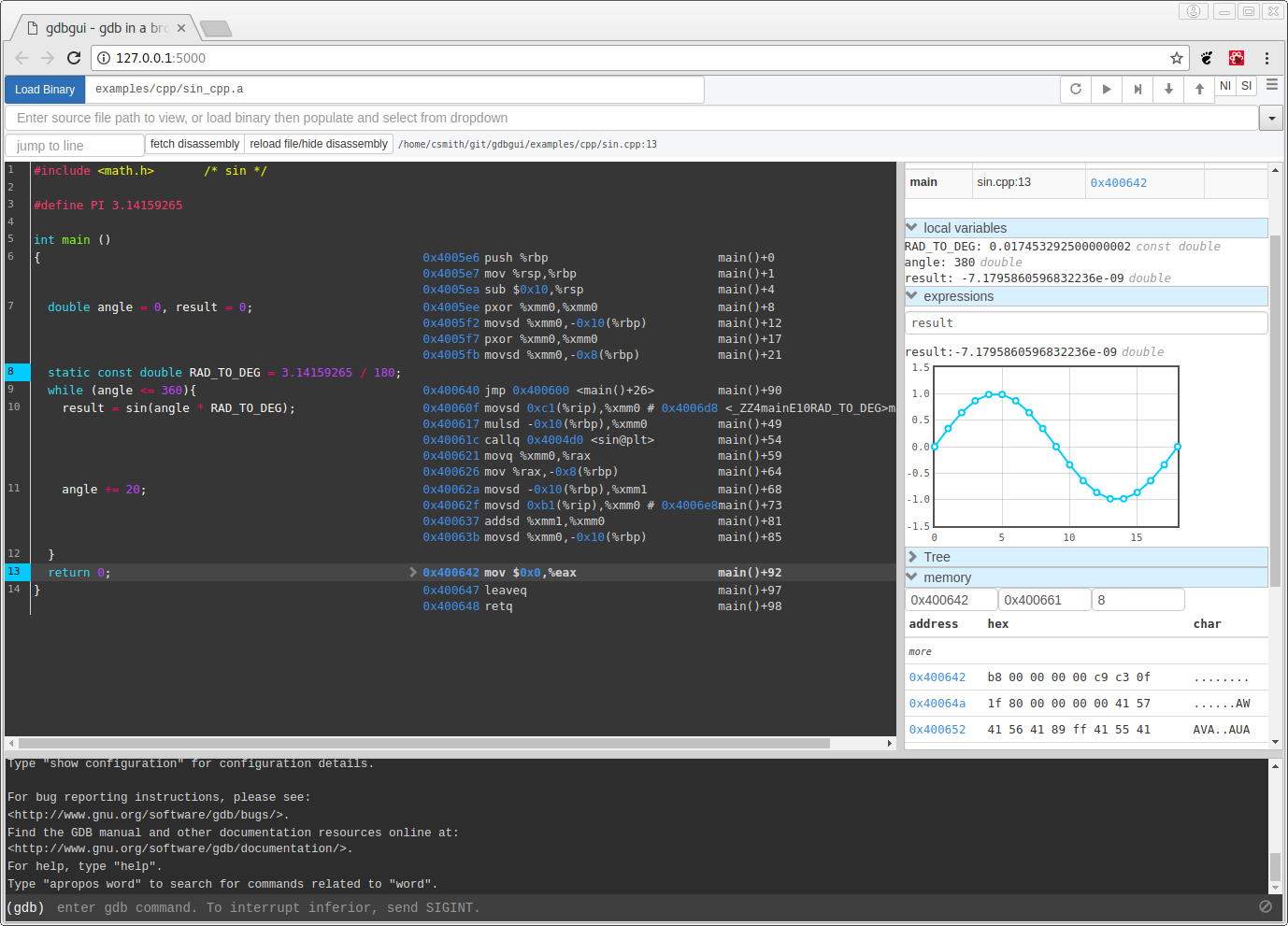

cmd + Q to quit Keychain Access app and reopen for a refresh.Click “Continue” to create the certificate. So here we save it into login, then drag into System.) Do NOT change this option to “System” as suggested in 1. (Though saving the certificate into System may succeed sometimes, it would probably trigger “ Unknown Error: -214,…” error.Check “ Let me override defaults”, then click “Continue” until “Specify a Location For The Certificate” screen. Name the certificate gdb-cert, set Identity Type to be “Self Signed Root” (default), and set Certificate Type to be “Code Signing”.In the Menu, select “Keychain Access” → “Certificate Assistant” → “Create a certificate…“.If you tried some steps before and left some previous (unsuccessful) certificates & keys in login / System keychain, delete them all, then cmd + Q to quit Keychain Access app and reopen for a refresh.

Make sure there aren’t any GDB-related certificates.In your terminal to see if the Debugging Restriction component is “Disabled”. In the Menu, select “Utilities” → “Terminal” to open a terminal. Select a language and enter the Recovery Mode UI.You should now be booting into Recovery Mode. Turn it on again, hold cmd + R when booting up, until logo shows up. Turn off System Intergrity (Debugging Component)

If you already have it (with brew for example), make a clean uninstallation (e.g. Met problems considering Codesign or “ During startup program terminated with signal …” / “ unknown load command 0x32”, etc.If you really wanna make it, the following procedure is what finally worked or me.
Mac os gdb install verification#
TL DR: Use lldb instead of GNU gdb on macOS >= 10.14 Mojave directly (app verification scheme on newer macOS gets really complicated). Hosted on GitHub Pages - Theme by orderedlist GDB Installation & Code-sign Steps on macOS X Follow the instructions when the macOS installer opens.Guanzhou's personal storage for lecture notes, blog posts, & good mood. Select the volume containing the bootable installer, then select ‘Continue’. Hold the power button until you see the startup options window. Make sure this machine is connected to the internet and supports the macOS version you’re installing.
Mac os gdb install install#
Click ‘Continue’ and follow the instructions.įirst, plug the bootable installer into the Mac you wish to install macOS. Select ‘Install macOS’ or ‘Install OS X’ from the Utilities window. Select the volume that contains the bootable installer. Release the ‘Option’ key when you see a dark screen showing your bootable volumes.

Press and hold the ‘Option’ key after turning on or restarting the Mac. Plug the bootable installer into a Mac that’s connected to the internet and is compatible with the macOS version you’re installing. The steps are different, depending on whether you're using an Intel-based Mac or one with Apple silicon. It's now time to use the bootable installer to install a fresh copy of macOS. You've now successfully created a bootable installer that you can use to install macOS on other machines. If asked, click 'OK' to allow the copying of files to proceed. Type 'Y' to confirm that you want to erase the volume, then press 'Return'.
Mac os gdb install password#
Type your administrator password when prompted, then press 'Return' again. Continue with TerminalĪfter pasting the command above, hit the 'Return' key. Change the name in the command to match your settings, if necessary.įor macOS Big Sur, copy and paste the following into Terminal: sudo /Applications/Install\ macOS\ Big\ Sur.app/Contents/Resources/createinstallmedia -volume /Volumes/MyVolumeįor macOS Catalina: sudo /Applications/Install\ macOS\ Catalina.app/Contents/Resources/createinstallmedia -volume /Volumes/MyVolumeįor macOS Mojave: sudo /Applications/Install\ macOS\ Mojave.app/Contents/Resources/createinstallmedia -volume /Volumes/MyVolumeįor macOS High Sierra: sudo /Applications/Install\ macOS\ High\ Sierra.app/Contents/Resources/createinstallmedia -volume /Volumes/MyVolumeįor OS X El Capitan: sudo /Applications/Install\ OS\ X\ El\ Capitan.app/Contents/Resources/createinstallmedia -volume /Volumes/MyVolume -applicationpath /Applications/Install\ OS\ X\ El\ Capitan.app 3. With each command, it's assumed the installer is located in your 'Applications' folder and 'MyVolume' is the name of the USB flash drive. The command differs, depending on the macOS version you're going to install. In the next step, you'll enter a command in Terminal. Choose 'Finder' then select 'Go' from the menu bar. Connect the USB flash drive to the computer you wish to install macOS. Once you have your bootable installer ready, it's time to move to the next step.


 0 kommentar(er)
0 kommentar(er)
